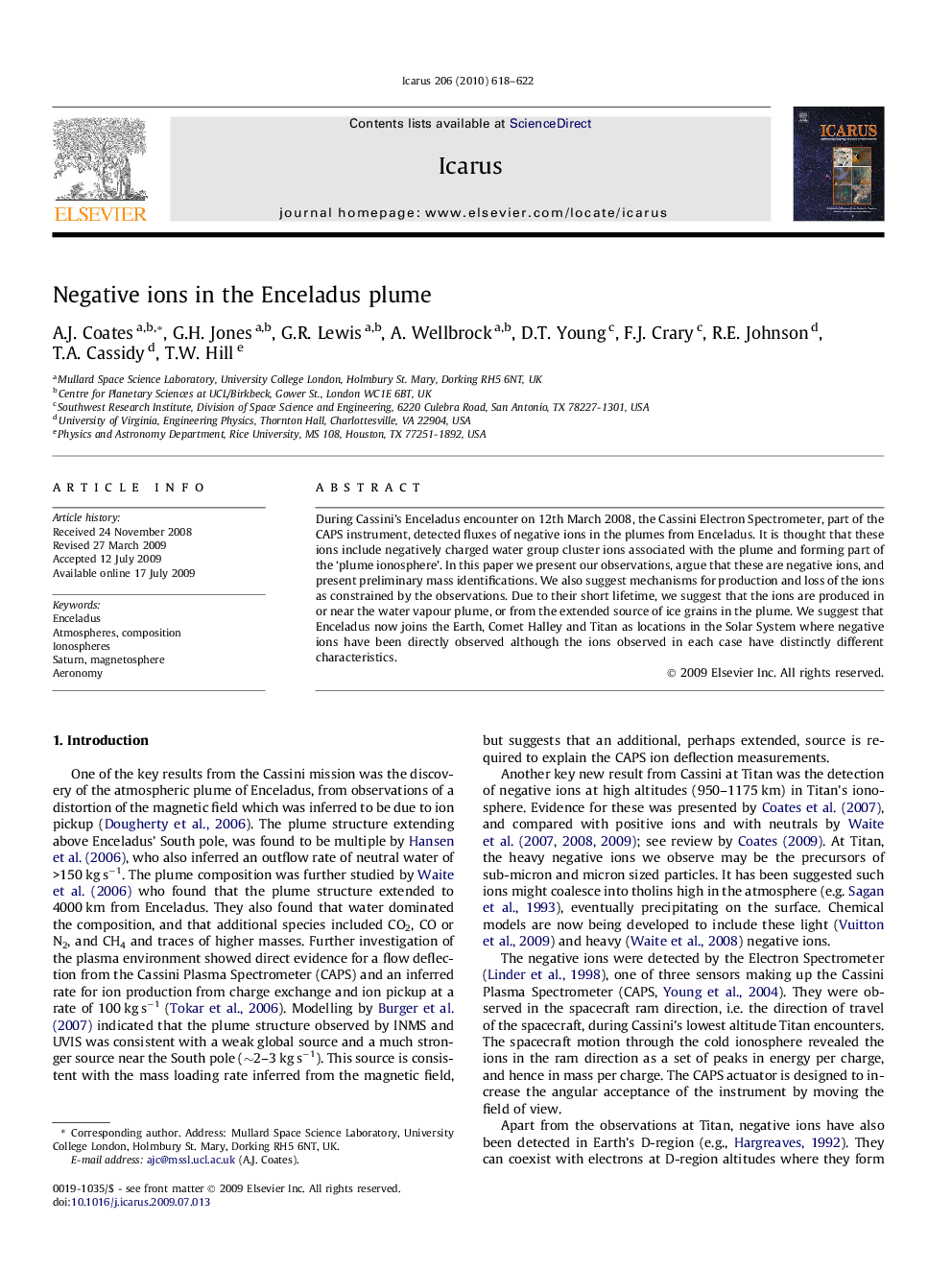| Article ID | Journal | Published Year | Pages | File Type |
|---|---|---|---|---|
| 1774385 | Icarus | 2010 | 5 Pages |
During Cassini’s Enceladus encounter on 12th March 2008, the Cassini Electron Spectrometer, part of the CAPS instrument, detected fluxes of negative ions in the plumes from Enceladus. It is thought that these ions include negatively charged water group cluster ions associated with the plume and forming part of the ‘plume ionosphere’. In this paper we present our observations, argue that these are negative ions, and present preliminary mass identifications. We also suggest mechanisms for production and loss of the ions as constrained by the observations. Due to their short lifetime, we suggest that the ions are produced in or near the water vapour plume, or from the extended source of ice grains in the plume. We suggest that Enceladus now joins the Earth, Comet Halley and Titan as locations in the Solar System where negative ions have been directly observed although the ions observed in each case have distinctly different characteristics.
